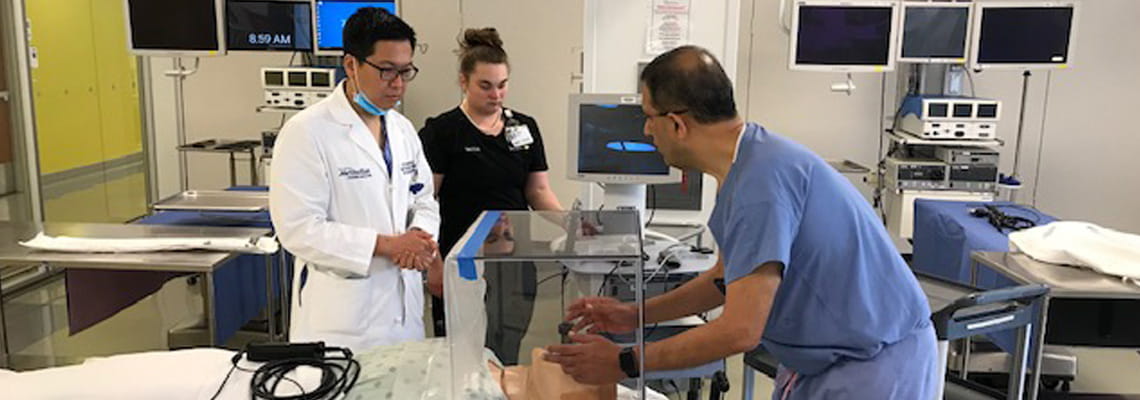
New Aerosol Design Shields Health Care Workers during Intubation
Monday, March 30, 2020 - During the course of COVID-19 treatment, critically ill patients can rapidly develop respiratory failure that requires emergent ventilator support. One of the highest risks for health care workers occurs during intubation. The process of inserting an endotracheal tube when placing a patient on a ventilator allows a high rate of contaminated air to be expelled and form aerosols. Approximately 3.2% of COVID-19 patients in mainland China required intubation and invasive ventilation at some point in the disease's course.1
As the need for intubation increases in U.S. cases, so does the need for a new method of safe delivery for health care works. Two Houston Methodist doctors, Steven H. Hsu, MD, assistant professor of clinical medicine, Department of Medicine, and adjunct assistant professor, Texas A&M University College of Medicine, and Faisal N. Masud, MD, medical director of critical care, Houston Methodist Hospital, and professor of clinical anesthesiology, Departments of Anesthesiology & Critical Care and Cardiovascular Sciences, DeBakey Heart & Vascular Center, have developed a way to bring that added safety to their co-workers. They designed the Houston Methodist Aerosol Container, or HMAC, a clear plastic box-like device that shields clinicians from expelled air when intubating a patient.
"The original design came from Dr. Lai Hsien Yung, an anesthesiologist in Christian Mennonite Hospital, Hualien, Taiwan, where I was born, and his family is living in Houston," said Hsu. "I found his design and thought 'This is a great idea to apply during this time of crisis.' "
Hsu and his colleagues at Houston Methodist have made several modifications to the HMAC, including an added disposable sheet that allows the head and neck to come under the box and keeps the aerosol from spreading. Another iteration upgraded the arm holes with a rubber seal, and soon a new version will include a slanted front to enable easier view and control. These changes enhance the box's utility and safety, and will allow it to be used for bronchoscopy or even nasopharyngeal sampling in addition to intubation.
The first prototype for testing was delivered on March 26. On the same day, Randolph Steadman, MD, chair, Department of Anesthesiology & Critical Care, DeBakey Heart & Vascular Center, coordinated plans for testing the first prototype in the Houston Methodist ICU. An additional prototype was deployed to the Emergency Department for testing and intubation purposes.
The HMAC continues to evolve during the testing phase. A new prototype, still in test at MITIETM, adds a vacuum component to remove undesirable aerosol. This design is not yet approved for use with patients. Using smoke to test air flow in the model, the team also confirmed this prototype with the vacuum left no particulate matter on the hands while intubating the test dummy.
Requests for prototype improvements are met with great flexibility and responsiveness due to Houston Methodist’s Machine Shop. The in-house machine shop, under the direction of lead machinist Juan Fernandez, will enable production of 10 new boxes in approximately seven days, with plans to deliver a total of 50 boxes in the following three weeks.
Each box can be produced at a minimal cost (approximately $67) using acrylic or transparent polycarbonate sheet. After each intubation, the box can be re-used after thorough cleaning with 70% alcohol or bleach.
From Taiwan's design to the evolution of HMAC, the aerosol box concept provides frontline health care workers a protective, reusable, effective and low-cost solution to minimize exposure and risks during the COVID-19 pandemic.
